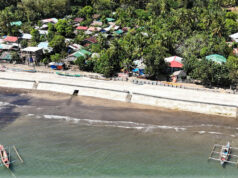DOMESTIC trade rose by volume and value in the first quarter, the Philippine Statistics Authority (PSA) said.
According to preliminary trade data, the total value of domestic trade increased 6.1% to P174.88 billion in the first three months of the year.
In volume terms, domestic trade grew 5.4% to 5.11 million tons.
The domestic commodity flow indicator measures the regional flow of goods, with nearly all trade flows employing water transport.
Four commodity categories monitored by the PSA reported an increase in volume led by “miscellaneous manufactured articles,” which rose 226.9% to 380,184 tons. In value terms, the category rose 64.2% to P10.66 billion.
Coming in second was the beverages and tobacco category, up 113.4% at 234,456 tons. By value, it rose 25.2% to P7.72 billion.
Other commodities that registered gains in trade volume during the quarter where chemicals and related products (33.5%) and manufactured goods classified chiefly by material (31.5%).
On the other hand, three categories recorded double-digit declines: animal and vegetable oils, fats and waxes (minus 27.3%); mineral fuels, lubricants and related materials (minus 20%); and commodities and transactions not elsewhere classified in the Philippine Standard Commodity Classification (minus 15.8%).
Food and live animals, which accounted for the biggest share of trade volume at 26.5%, declined 1.7% by volume, though value rose 3.4%.
Machinery and transport equipment accounted for 31.8% of traded goods by value at P55.63 billion, though the first-quarter total fell 2.4% from a year earlier.
The National Capital Region remained the top source of commodities with outflows amounting to P37.62 billion. It recorded a domestic trade surplus of P12.60 billion during the quarter.
The Central Visayas Region was the top destination of commodities, with total inflows at P30.90 billion and a domestic trade surplus of P4.25 billion.
“The first-quarter trade report is promising and is consistent with a steadily growing domestic economy,” said Guian Angelo S. Dumalagan, market economist at Land Bank of the Philippines (LANDBANK).
“Fiscal stimulus might have helped improve domestic trade activity,” he said.
The economy grew 6.8% year-on-year in the first quarter, fueled by a 13.6% rise in government spending — against the 0.1% in spending growth registered in the same period in 2017.
The economist also noted the contraction in the trade of agriculture products, saying that this reflected the slowdown in agricultural output due to adverse weather conditions.
“Moreover, the domestic trade report also reflects the rise in domestic inflation, as evidenced by the faster year-on-year increase in trade value versus trade quantity,” Mr. Dumalagan added.
Inflation accelerated to a new five-year high of 4.6% in May, picking up for a fifth straight month, on the back of higher costs of liquor and cigarettes, transport, restaurant dining and miscellaneous goods as well as home furnishings.
Going forward, Mr. Dumalagan said that with inflation expected to remain elevated this year, domestic trade growth in terms of value is expected to be faster than volume growth.
“Nevertheless, domestic trade activity overall is likely to remain firm this year amid prospects for an infrastructure-led economic expansion. A key risk to growth could be the possible slowdown in consumer demand as a result of rising prices,” he said. — Mark T. Amoguis




